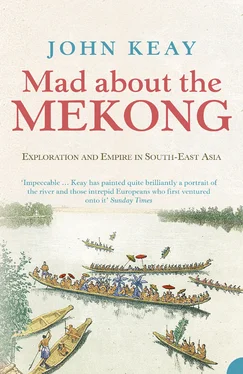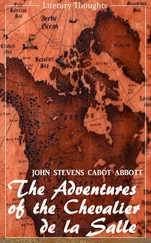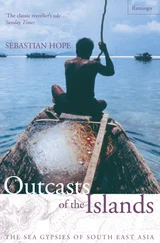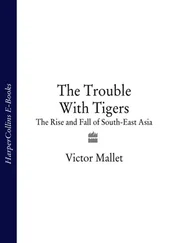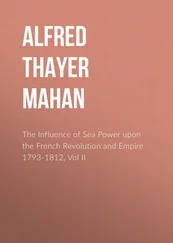Garnier, like Kurtz, would have little difficulty in recognising the region today. Even spouting ‘proboscideans’ have returned to the river. Their legs are the retractable steel pilings of Chinese drilling rigs, the waterspout comes from detonating charges laboriously sunk into the bedrock, and the proboscis belongs to a mechanical excavator poised on the rig’s foredeck to scoop out the debris. China takes the Economic Quadrangle seriously. The benefits of investment depend on making the river navigable; and that means taming the Tang-ho rapids. But when the work is finished, navigation will be possible for a maximum of six months a year. For the rest of the time, when the river is low, the rapids will remain as fearsome and insuperable as they appeared to the members of the Mekong Exploration Commission nearly 150 years ago.
As expeditions go, that which first ventured into the Mekong’s ‘heart of darkness’ deserves classic status. It ought to rank with, say, the African travels of Dr Livingstone. In 1871 Livingstone was the recipient of an honorary award at the first meeting of the International Geographical Congress; the only other such award at that prestigious gathering went to Francis Garnier.
Some twenty strong, the Commission disappeared into the unknown for over two years, and when it re-emerged – those who did – it would sweep the board at every geographical equivalent of the Oscars. Anticipating H.M. Stanley’s Congo expedition of twenty years later, it would also change the geography and ultimately the whole political complexion of the region. Thanks to the Mekong Exploration Commission a French empire would be hacked from what the expedition insisted on calling ‘Indo-China’; and under this dispensation Cambodia would be rescued from extinction, Laos ingeniously contrived, and in defiance of the French, a unitary Vietnam would be painfully projected.
Yet the French were ambivalent about exploration as such and were wont to disparage it as an Anglo-Saxon conceit deficient in scientific rigour. Worse still for the expedition’s survivors, word of their achievements would coincide with momentous events at home as France was repeatedly worsted, and Paris itself besieged, during the Franco – Prussian war. It would thus fall to others, especially the British, to heap honours on the Mekong Exploration Commission and to be the first to hail it as ‘one of the most remarkable and successful exploring expeditions of the nineteenth century’.
It was also one of the best-documented expeditions of the period. Besides an official record in four hefty volumes, we have a lavishly illustrated account which appeared in serialised instalments in a leading French journal, plus two lengthy personal accounts. Remarkably for the 1860s, there are even ‘before and after’ group portraits of the six principal participants.
The ‘before’ picture, an engraving based on a photograph, has something odd about it. Just as the expedition itself tackled the river backwards, starting where it ended and going doggedly against the flow ever after, so the picture appears to have been reversed. Presumably this had something to do with the technical problems of transferring a negative to an engraved plate. It would account for later confusion in the captioning of the picture and would explain why, for instance, Lagrée and Garnier have their hair partings on the wrong side; or why Delaporte – or is it de Carné? – appears to be looking away from the camera. All is adjusted by simply inspecting the picture in a mirror.
The original photo was taken just days before the expedition headed off into the unknown. Some of the men may never before have faced the camera. The picture would serve as an official memorial and, in the not unlikely event of their failing to return, as a cherished memento for family and friends. To a suspicious mind it is also telling evidence of a dangerously self-conscious formality that would dog the whole expedition.
The Saigon photographer, a Monsieur Gsell, would not be accompanying them. His apparatus was far too cumbersome and his glass plates far too fragile. But at government expense he and his equipment had been shipped up through the Mekong Delta and into Cambodia. There, in June 1866, the expedition officially assembled – then promptly split up. While awaiting the necessary documentation, and by way of getting acquainted, the Commission’s six French officials betook themselves to Siem Reap at the far end of Cambodia’s Tonle Sap, or ‘Great Lake’. A week of tramping and archaeologising amongst the Cyclopean ruins of Angkor would follow.
They were not the first Europeans to visit the ancient Khmer capital, but they were the first to attempt a systematic record of it. They tested their survey instruments by observing for latitude and longitude, by measuring the kilometres of wall and waterway, and by mapping much of the vast complex. Late into the night they sat amongst the statuary conjecturing about the beliefs and resources of Angkor’s builders, then they slept within its bat-infested cloisters.
For the photo a suitable site was chosen on the steps leading up to one of the temple terraces. Hats – a sun helmet, a bowler, a Vietnamese straw cone – were discarded yet left ‘in shot’. With the same exaggeratedly casual air, the members of the expedition draped themselves over the warm stonework and stared imperiously at the camera, six bearded bachelors on the threshold of a great adventure.
Just so, explorers of the Nile like Burton, Speke and Baker, all of whose exploits had climaxed in the previous five years, might have posed in front of the pyramids before trudging off into the Dark Continent – except that they did no such thing. British sensibilities were offended by such rank displays of professionalism. Her Majesty’s Government involved itself in exploration only to the extent of conceding what Lord Salisbury would call ‘an Englishman’s right to have his throat cut when and where he chose’. Notching up discoveries was reckoned by the British a sporting activity, reserved principally for gentlemen, conducted with a minimum of fuss, and administered by an august scientific body – the Royal Geographical Society.
That such amateurism had nevertheless produced handsome political dividends was undeniable. To Gallic minds, it was also deeply irritating. Amongst the men on the steps at Angkor a sneaking admiration for their British counterparts was overlaid by professional jealousy and intense suspicion. For far too long, they grumbled, France had allowed her rival a free hand in the world’s terra incognita. It was time to tear a leaf out of Albion’s album. Just as the Nile had given Britain its entrée into Africa, the Mekong would give France its entrée into Asia.
Scrutinising the photo, one is impressed more by its poignancy than its bravado. Far from sustaining the intended air of relaxed informality, it is as if the postures adopted by the explorers had been carefully rehearsed and their relative positions measured out with a ruler. On the extreme right (or left, if one uses the mirror), le Commandant Ernest Marc Louis de Gonzagues Doudart de Lagrée sits slightly apart from his colleagues, and not actually on the steps but on a ledge beside them. His legs are crossed, his shoes have buckles, and a well-placed sleeve displays the gold braid of his rank. Positioned not so as to make space for his name but so as to emphasise the scope of his authority, Lagrée (for short) affects a certain dignity. An aristocrat by birth and a product of the prestigious École Polytechnique in Paris, he was indisputably the leader. At forty-three and with a hint of grey, he was by far the oldest as well as being the most senior in rank and the only member of the expedition with an already notable record of service in south-east Asia.
Читать дальше
